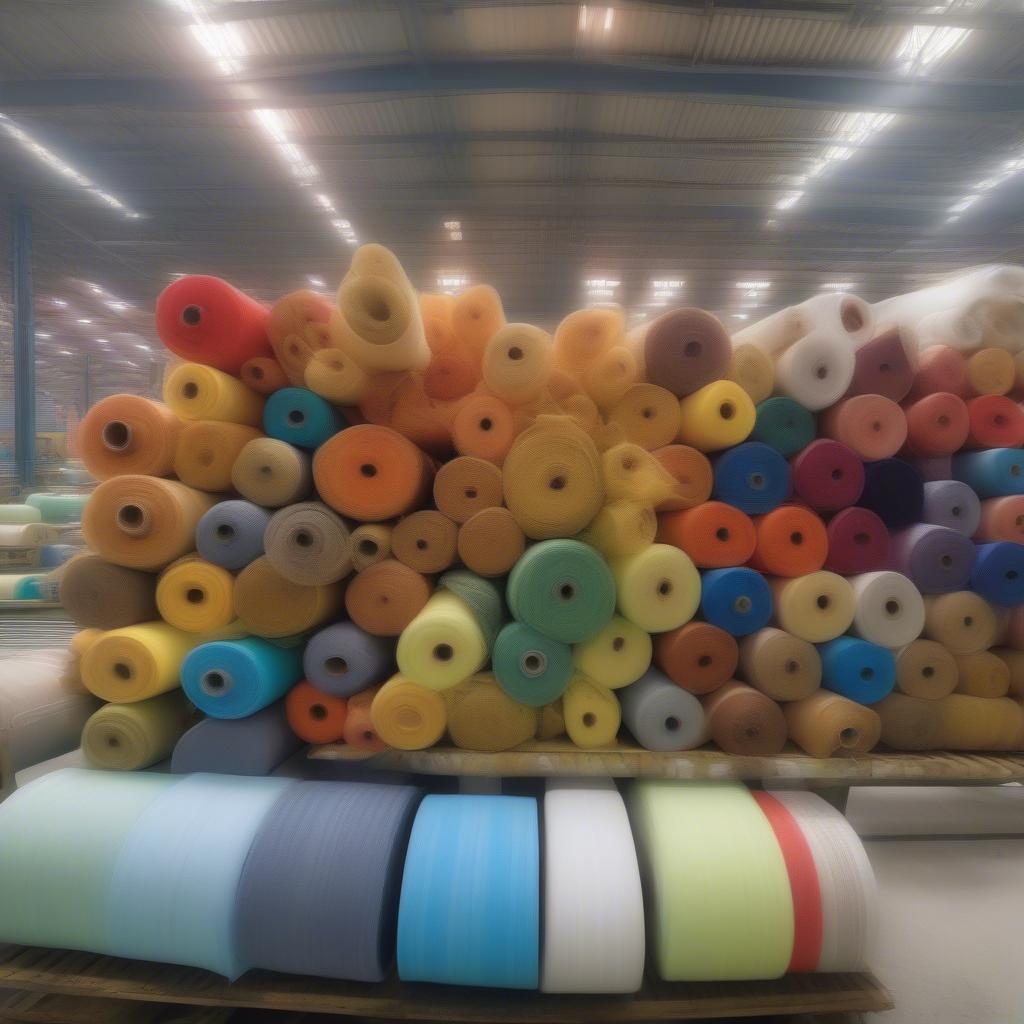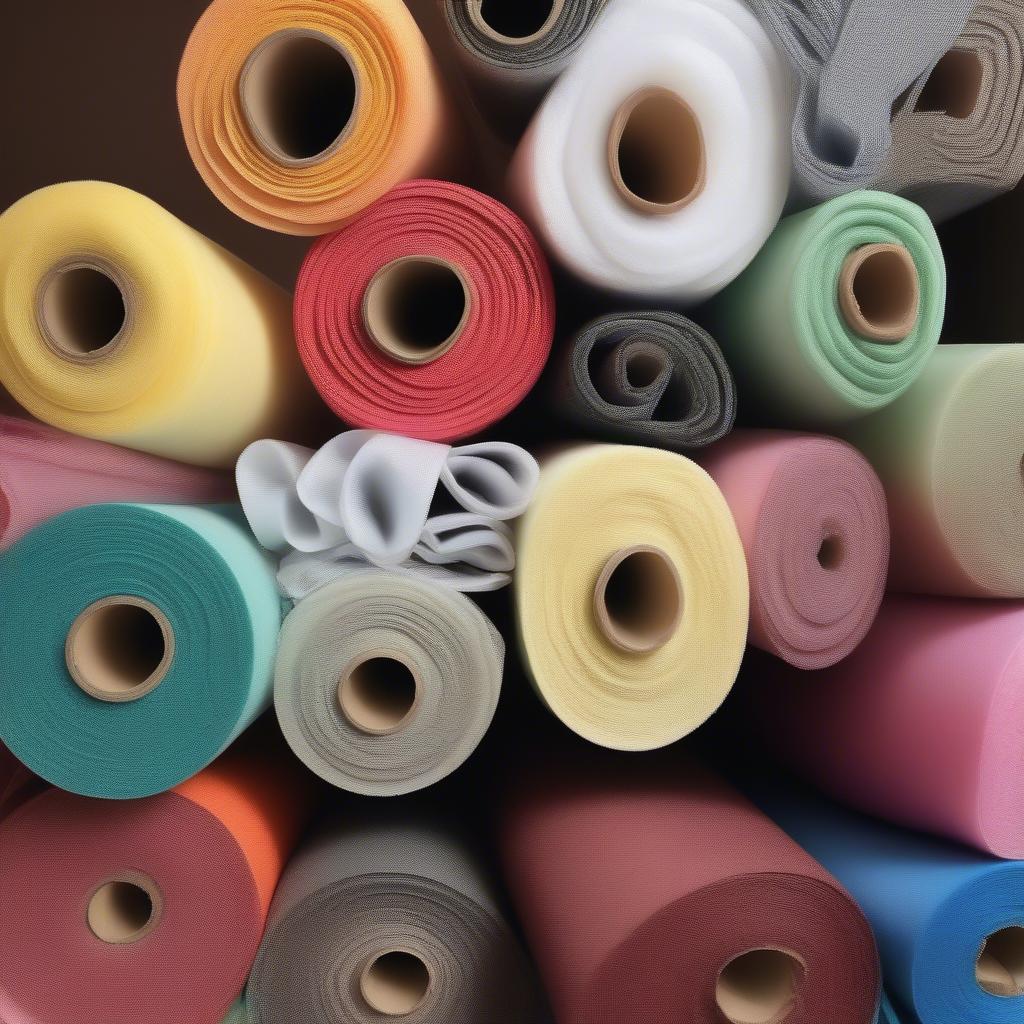Woven Bag
Non Woven Fabric in Rolls for Bag Making
Non woven fabric in rolls is a popular choice for bag making due to its versatility, durability, and cost-effectiveness. From shopping bags to reusable totes, this material offers a wide range of options for manufacturers. This article will delve into the world of non-woven fabric rolls, exploring their properties, benefits, and applications in the bag-making industry. manufacturing of non woven bags
Understanding Non-Woven Fabric
Non-woven fabrics are engineered materials made from fibers bonded together through mechanical, thermal, or chemical processes. Unlike woven fabrics, they don’t require yarns and offer unique properties like breathability, water resistance, and strength. They are also lightweight and easy to handle, making them ideal for bag production.
What Makes Non-Woven Fabric Ideal for Bags?
Several key characteristics make non-woven fabric a preferred choice for bag making:
- Durability: Non-woven fabrics are tear-resistant and can withstand considerable weight, making them suitable for various bag types.
- Breathability: The porous structure of non-woven fabric allows for air circulation, preventing condensation and keeping contents fresh.
- Water Resistance: Many non-woven fabrics offer water-repellent or waterproof properties, protecting bag contents from moisture.
- Cost-Effectiveness: Compared to traditional woven fabrics, non-woven options are often more affordable, reducing overall production costs.
- Customizability: Non-woven fabric can be easily printed, dyed, and cut into various shapes and sizes, allowing for a wide range of design possibilities.
 Non-woven fabric rolls ready for bag production
Non-woven fabric rolls ready for bag production
Exploring Different Types of Non-Woven Fabric for Bags
Various types of non-woven fabrics are available, each with specific properties suited for different bag applications. Some of the most common include:
- Spunbond: A strong and durable fabric often used for reusable shopping bags and promotional totes.
- Meltblown: A finer fabric used for filtration purposes, sometimes incorporated into bags requiring protective layers.
- SMS (Spunbond-Meltblown-Spunbond): A composite fabric combining the strength of spunbond with the filtration properties of meltblown, ideal for medical or hygiene bags.
The Bag Making Process with Non-Woven Fabric Rolls
The process of making bags from non-woven fabric rolls involves several steps, from cutting and sealing to adding handles and other accessories. Modern machinery allows for efficient and high-speed production, catering to large-scale manufacturing demands.
How are the Rolls Utilized?
non woven roll for bags Non-woven fabric rolls are fed into automated bag-making machines that cut, fold, and seal the fabric according to pre-set specifications. The process is streamlined to ensure consistent quality and output.
 Automated bag-making machine processing a non-woven roll
Automated bag-making machine processing a non-woven roll
“Choosing the right type of non-woven fabric is crucial for the final bag’s quality and functionality,” says Sarah Miller, a textile engineer with over 15 years of experience in the industry. “Factors like desired strength, breathability, and printability should be considered.”
Benefits of Using Non-Woven Fabric in Rolls
Using non-woven fabric rolls offers numerous benefits for bag manufacturers:
- Efficient Production: Rolls facilitate automated production, increasing efficiency and reducing labor costs.
- Reduced Waste: Precise cutting and optimized roll sizes minimize material waste.
- Consistent Quality: Automated processes ensure uniform bag quality and dimensions.
- Versatile Applications: Non-woven fabric rolls can be used to create a wide variety of bag styles and sizes.
non woven bags manufacturing machine factory
Choosing the Right Non-Woven Fabric Roll for Your Needs
Selecting the appropriate non-woven fabric roll requires careful consideration of various factors:
- Bag Application: The intended use of the bag will dictate the required fabric properties, such as strength, water resistance, and breathability.
- Fabric Weight: The weight or GSM (grams per square meter) of the fabric determines its thickness and durability.
- Roll Width: The roll width should be compatible with the bag-making machinery and desired bag dimensions.
- Color and Printing Requirements: Consider the desired color and any printing requirements for branding or design elements.
 Different colors and widths of non-woven fabric rolls
Different colors and widths of non-woven fabric rolls
Conclusion
Non woven fabric in rolls offers a versatile and cost-effective solution for bag making. Its durability, breathability, and customizability make it suitable for various bag applications, from simple shopping bags to specialized packaging. By understanding the different types of non-woven fabrics and choosing the right roll for your needs, you can optimize your bag production process and create high-quality, functional bags that meet your specific requirements. promotions pet polyester spunbond non-woven fabric for package/bags
“With the increasing demand for sustainable packaging solutions,” adds David Lee, a leading industry consultant, “non-woven fabric’s recyclability is another key advantage that makes it a preferred choice for environmentally conscious businesses.”
FAQ:
- What are the different types of non-woven fabrics used in bag making?
- How do I choose the right GSM for my non-woven bags?
- Are non-woven bags recyclable?
- What is the average cost of non-woven fabric rolls?
- Can non-woven bags be custom printed?
- What are the advantages of using non-woven fabric for bags over other materials?
- Where can I purchase non-woven fabric rolls for bag making?
For further assistance, please contact us at Hanoi, Vietnam or Tech Avenue, Suite 12, San Francisco, CA 94105, USA. We have a 24/7 customer service team.
